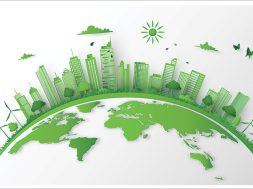Indian cities ranked below average in Green City Index
Singapore is Asia’s greenest metropolis. Delhi is an ‘’average’’ performer whereas other Indian cities namely Mumbai, Kolkata and Bengaluru have been ranked ‘’below average’’ according to the study ‘Asian Green City Index’- commissioned by Siemens and performed by the independent Economist Intelligence Unit (EIU).
For the study, which was carried out over the past few months, the EIU analyzed the aims and achievements of 22 major Asian cities with respect to environmental and climate protection. The study reveals that, Pakistan’s commercial capital Karachi is the worst performer, being lone member in the list of cities “well below average.”
It said Singapore City stands out in particular for its ambitious environmental targets and its efficient approach to achieving them. In other Asian cities as well, however, environmental awareness and climate protection guidelines are playing an increasingly important role. “The Asian Green City Index supports cities in their efforts to expand their infrastructures on a sustainable basis. We want to enable Asia’s up-and-coming urban centers to achieve healthy growth rates coupled with a high quality of life,” said Barbara Kux, member of the Managing Board of Siemens AG and the company’s Chief Sustainability Officer.
The Asian Green City Index examines the environmental performance of 22 major Asian cities in eight categories: energy and CO2, land use and buildings, transport, waste, water, sanitation, air quality and environmental governance.
As far as energy management and curbing CO2 emissions are concerned, Delhi placed itself amongst “above average” performers, while Kolkata gets the ‘below average’ tag. But on the water consumption criteria, Kolkata performed well with a consumption of 138 litres per person per day bettering the average of 278 litres.
The study said progressive rural exodus in Asia is unprecedented in human history. According to the United Nations Population Division, the proportion of Asia’s population living in cities has grown in the last 20 years by around a third to over 40 percent. In the last five years alone, the number of inhabitants in Asian cities has been increasing by about 100,000 a day. And this development will continue in the years to come. In China alone, experts predict that by 2025 there will be well over 200 cities with a population of over a million. 2011 there are just under 90, while Europe currently has 25 cities of that size.
The increasing urbanization is having an enormous impact on the infrastructure: with the additional number of inhabitants, correspondingly more energy, clean water, transportation and energy-efficient homes are required. The Asian Development Bank estimates that to cope with the influx, the Asian cities must for example build 20,000 new homes and 250 kilometers of road and provide transportation infrastructure and an extra six million liters of drinking water, all on a daily basis. In addition, the cities are the main emitters of harmful greenhouse gases: Cities are the growth engines of the future, but they are also responsible for 75% of worldwide energy consumption and for around 80% of the human CO2 emissions.
Cookie Consent
We use cookies to personalize your experience. By continuing to visit this website you agree to our Terms & Conditions, Privacy Policy and Cookie Policy.





